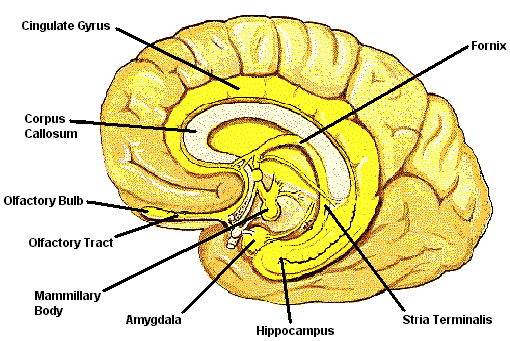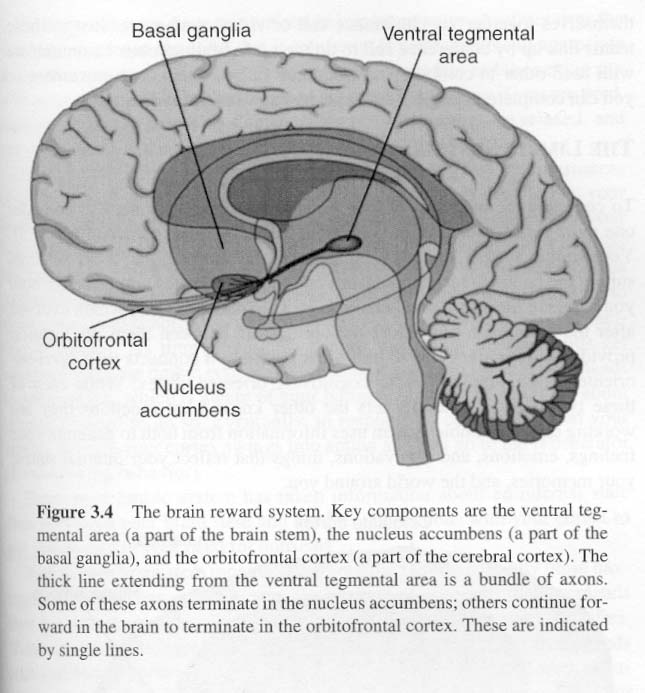

Drugs and the Limbic System
All drugs that people abuse all
change the way the limbic system works. Drugs disrupt the careful
modulation of feelings and motivations that underlie normal behavior.
When these feelings lose touch with reality, the person receives artificial
relief, pleasure, contentment, and relaxation take over.
The Brain Reward System
The Brain Reward System is a specific
limbic circuit that generates the feelings of pleasure. This system
originates in a group of neurons that are located in the mid brain (called
the ventral tegmental area, or VTA). These neurons then connect to
a variety of places within the limbic system, but the important connection
is to the nucleus accumbens in the basal ganglia. The basal ganglia
are a large, complex set of structures within the limbic system that function
in generating movements, some cognitive functions, emotional and motivational
activities. When a drug activates the VTA neurons, these neurons releasedopamine
into the nucleus accumbens and the person feels pleasure.
Key Components of the Brain Reward
System

Home, Definition,
Development,
Pathology,
Psychology,
Sociology,
Treatment